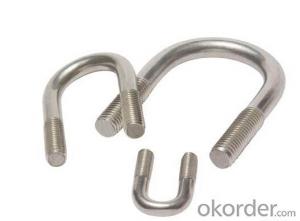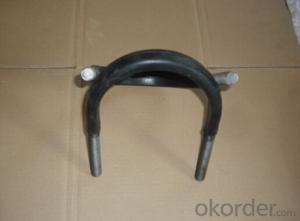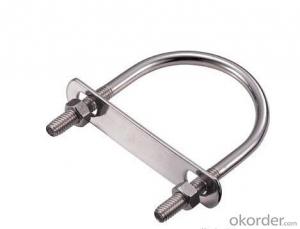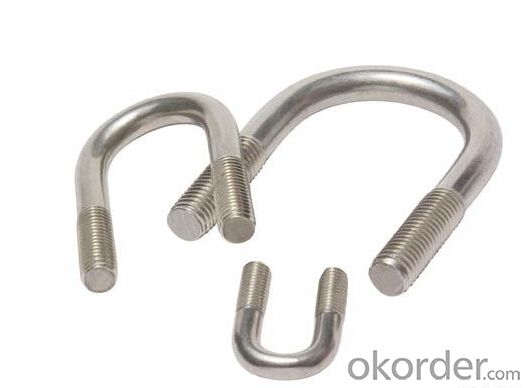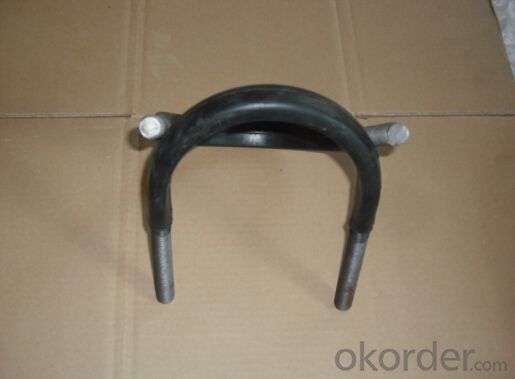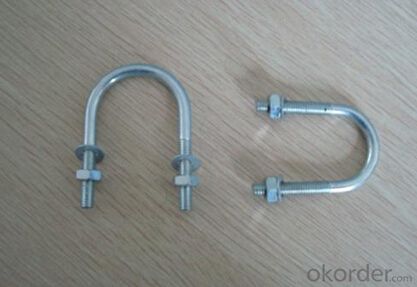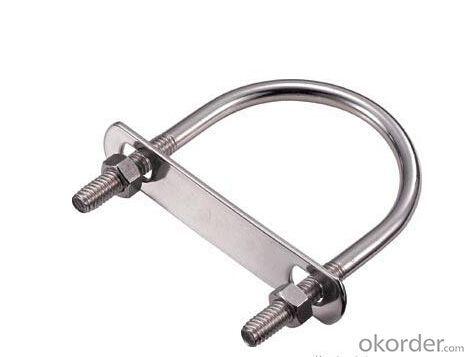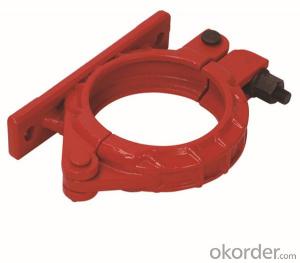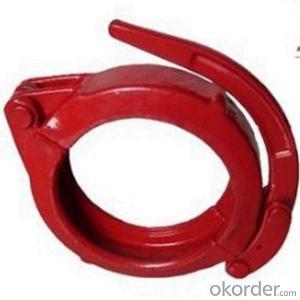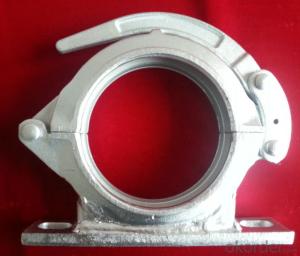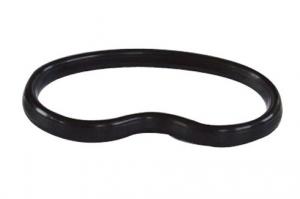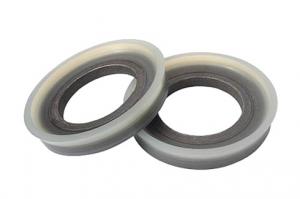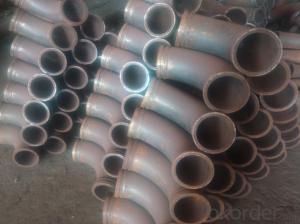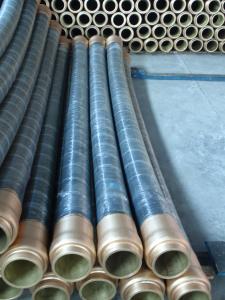U shape pipe clamp for Concrete Pump with high quanlity
- Loading Port:
- Shanghai
- Payment Terms:
- TT OR LC
- Min Order Qty:
- 10 set
- Supply Capability:
- 1000 set/month
OKorder Service Pledge
OKorder Financial Service
You Might Also Like
Concrete pump pipe clamp is applicable to concrete pump pipe.Its belongs to concrete pump spare parts
Specifications
stainless steel u bolt clamp steel pipe
1.Manufactur supply directly.
2.Size:M4-M48.etc
3.ISO,SGS.
4.Grade:201,304,316...
stainless steel u bolt clamp steel pipe
Size:stainless steel u-bolts
M6x16-50
M8x20-100
M10x20-100
M12x20-100
M14x30-100
M16x30-100
M18x40-100
M20x40-100
M22x50-100
M27x50-100
M30x50-100
M36x50-100
material:stainless steel
201
304 0Cr18Ni9 304L 00Cr19Ni10
321 0Cr18Ni9Ti 316 0Cr17Ni12Mo2
316L 00Cr17Ni14Mo2 310S 0Cr25Ni20
surface:bright
Tolerance: +/-0.015mm
Grade: 4.6 4.8 5.6 5.8 6.8,etc
DN125 Concrete Pump Clamp Coupling
Type-HD
| 1.5" clamp HD |
2" clamp HD |
| 3" clamp HD |
| 4" clamp HD |
| 3"clamp HD (adjustable) |
| 4"clamp HD (adjustable) |
| 2.5" clamp HD |
| 5" clamp HD |
| 5" clamp HD (adjustable) |
Type-Bolt& snap
Bolt Clamp 2" |
| Bolt Clamp 3" |
| Bolt Clamp 4" |
| Bolt Clamp 5" |
| Bolt Clamp 6" |
| Bolt Clamp Boom Bracket Type 5" |
| Two Bolts Boom Clamp 5" |
| Snap Clamp 2" |
| Snap Clamp 3" |
| Snap Clamp 4" |
| Snap Clamp 4.5" |
| Snap Clamp 5" |
| Snap Clamp 6" |
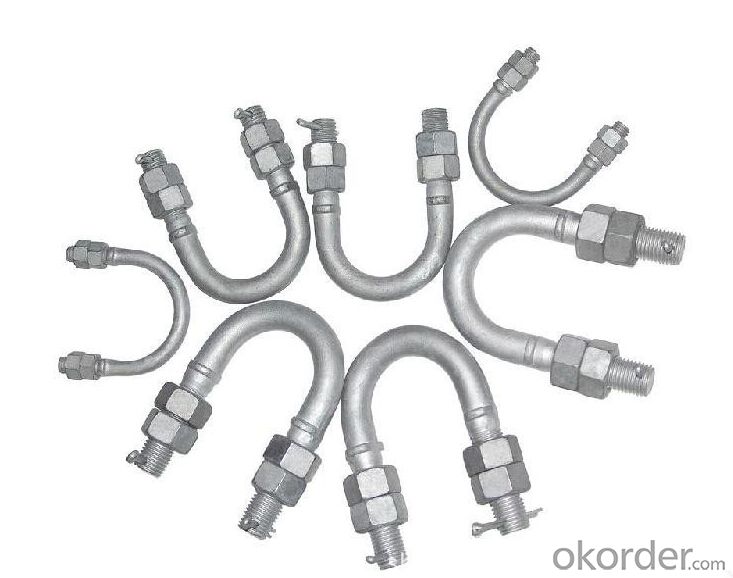
- Q: How often should I replace concrete pump spare parts?
- The frequency of replacing concrete pump spare parts depends on several factors such as the quality of the parts, the intensity of usage, and the maintenance practices. However, as a general guideline, it is recommended to inspect and replace worn or damaged concrete pump spare parts on a regular basis, typically every 6 to 12 months, to ensure optimal performance and avoid potential breakdowns or safety hazards.
- Q: Can I get spare parts for both concrete pumps with and without boom control systems?
- Yes, you can typically get spare parts for both concrete pumps with and without boom control systems. Many manufacturers and suppliers of concrete pumps offer a wide range of spare parts to meet the needs of different types of pumps. Whether it's for a pump with a boom control system or one without, you should be able to find the necessary spare parts from reputable suppliers. It is recommended to contact the manufacturer or supplier directly to inquire about the availability and compatibility of spare parts for your specific concrete pump model.
- Q: How much is the pump for a month?
- In the mud, the price is about 25 yuan per square, according to my experience, more than 175000 points per month can pump 7000 yuan, totaling $
- Q: What are the different types of concrete pump hopper cylinders?
- There are primarily two types of concrete pump hopper cylinders: single-acting cylinders and double-acting cylinders. Single-acting cylinders have only one piston that pushes the concrete out of the hopper. On the other hand, double-acting cylinders have two pistons, one for pushing the concrete out and the other for bringing it back into the hopper.
- Q: How often should hydraulic filters be replaced in a concrete pump?
- To ensure optimal performance and longevity of the equipment, it is important to regularly replace the hydraulic filters in a concrete pump. The frequency of replacement will depend on factors such as the specific model of the concrete pump, the operating conditions, and the quality of hydraulic fluid used. As a general rule, it is recommended to replace the hydraulic filters every 500 to 1,000 operating hours or at least once a year, whichever comes first. However, it is crucial to consult the manufacturer's recommendations and guidelines for the specific model of the concrete pump, as they may have specific maintenance schedules and intervals. Regularly inspecting the hydraulic filters is also vital to determine if replacement is necessary before the recommended interval. If the filters are clogged, damaged, or show signs of excessive wear, immediate replacement is necessary to prevent potential damage to the hydraulic system. Additionally, if the concrete pump operates in harsh or dusty environments, more frequent filter replacements may be required to ensure proper filtration and prevent contamination. In conclusion, timely and proper replacement of hydraulic filters in a concrete pump is crucial to maintain efficiency and reliability, prevent breakdowns, and prolong the service life of the equipment.
- Q: What are some common issues with concrete pump pipes and how can they be prevented?
- Some common issues with concrete pump pipes include blockages, leaks, and wear and tear. These issues can be prevented by following proper maintenance and operational practices. 1. Blockages: Blockages occur when concrete hardens inside the pipe, hindering the flow. To prevent blockages, it is important to regularly clean the pipes after each use. Flushing the pipes with water or using a high-pressure air hose can remove any residual material and prevent build-up. Additionally, using concrete mixtures with proper consistency and avoiding excessive use of additives can reduce the likelihood of blockages. 2. Leaks: Leaks can occur due to cracks or gaps in the pipe, causing concrete to seep out. Regular inspection of the pipes is crucial to identify any signs of damage or wear. Repairing or replacing damaged sections promptly can prevent leaks. It is also essential to use high-quality pipes that are resistant to abrasion and chemical corrosion, as they are less prone to developing leaks. 3. Wear and Tear: Concrete pump pipes are subjected to significant stress and abrasion during operation. Over time, this can lead to wear and tear, resulting in weakened pipes or even breakages. To prevent excessive wear, it is important to use pipes made from durable materials such as hardened steel or composite materials. Regularly inspecting the pipes for signs of wear, such as thinning or deformation, and replacing them as needed can help prevent sudden failures. 4. Pipe movement and alignment issues: Concrete pump pipes can shift or become misaligned during operation, leading to reduced efficiency and potential damage. To prevent this, ensure that the pipes are securely fastened to the pump and properly aligned. Using clamps and brackets or employing anti-vibration measures can help maintain the stability and alignment of the pipes during pumping operations. 5. Operator errors: Improper handling and operation can also contribute to issues with concrete pump pipes. Operators should be adequately trained in operating the pump and handling the pipes. Following recommended operating procedures, avoiding excessive pressure or flow rates, and being cautious while maneuvering the pipes can prevent unnecessary strain and damage to the pipes. Overall, proactive maintenance, proper handling, and selecting high-quality pipes can significantly reduce common issues with concrete pump pipes, ensuring smooth and efficient concrete pumping operations.
- Q: How do I troubleshoot issues related to concrete pump spare parts control systems?
- In order to troubleshoot issues related to concrete pump spare parts control systems, it is crucial to adopt a systematic approach. The following steps can be taken: 1. Clearly identify the problem: Start by precisely identifying the issue you are encountering with the control system. Is it completely non-functional? Are there specific functions or components that are not operating correctly? Understanding the problem will help guide your troubleshooting efforts. 2. Verify power supply: Make sure that the control system is receiving the appropriate power supply. Inspect the power source, circuit breakers, and fuses to ensure there are no interruptions or faults in the electrical supply. If necessary, replace or repair any faulty components. 3. Examine connections: Inspect the wiring connections and terminals within the control system. Loose or damaged connections can cause issues with the system's functioning. Tighten any loose connections and repair or replace any damaged wiring. 4. Review control settings: Confirm that the control settings are accurately adjusted according to the manufacturer's specifications. Incorrect settings can result in malfunctions or inefficient operation. Consult the user manual or contact the manufacturer for guidance on proper control settings. 5. Conduct diagnostic tests: Many control systems have built-in diagnostic features or error codes that can assist in identifying specific issues. Refer to the system's manual to understand how to access and interpret these diagnostic tools. Carry out any recommended diagnostic tests to pinpoint the problem area. 6. Inspect sensors and actuators: Sensors and actuators play a vital role in the operation of the control system. Check these components for any damage, misalignment, or malfunctioning. Clean or replace sensors as necessary and ensure that the actuators are properly connected and functioning correctly. 7. Seek technical support: If you have followed the aforementioned steps and are still unable to resolve the issue, it may be beneficial to contact the manufacturer's technical support team. They can offer expert guidance on troubleshooting the specific control system and may suggest additional steps or solutions. Always prioritize safety when troubleshooting control systems. Make sure that the pump is turned off and disconnected from the power source before working on any electrical components. If you are uncertain or uncomfortable with any troubleshooting steps, it is advisable to seek professional assistance.
- Q: How often should concrete pump control levers be inspected and replaced?
- Concrete pump control levers should be inspected regularly to ensure they are in proper working condition. The frequency of inspections and replacements will depend on several factors such as the amount of usage, environmental conditions, and the quality of maintenance performed on the equipment. As a general guideline, control levers should be inspected at least once a year. This inspection should include a thorough examination of the lever mechanism, checking for any signs of wear, damage, or malfunction. Additionally, it is recommended to inspect the levers after any major repair or maintenance work to ensure they have been properly reinstalled and are functioning correctly. If any issues are found during the inspection, it is crucial to address them promptly. Depending on the severity of the problem, repairs or replacements may be necessary. Minor repairs can often be done on-site, while more significant issues may require the assistance of a professional technician. It is important to note that regular maintenance, including lubrication and cleaning, can help extend the lifespan of the control levers. Following the manufacturer's guidelines for maintenance and usage can also help prevent premature wear and damage. Ultimately, the frequency of inspections and replacements may vary depending on the specific circumstances. It is always best to consult the equipment's manual or manufacturer for specific recommendations regarding the control levers' maintenance and replacement.
- Q: How can a faulty battery affect the operation of the pump?
- A faulty battery can affect the operation of the pump by causing it to lose power or stop working altogether.
- Q: How is the piping of the concrete pipe designed?
- When pumping underground structures, the horizontal axis of the ground shall be perpendicular to the axis of the Y - shaped discharge port
Send your message to us
U shape pipe clamp for Concrete Pump with high quanlity
- Loading Port:
- Shanghai
- Payment Terms:
- TT OR LC
- Min Order Qty:
- 10 set
- Supply Capability:
- 1000 set/month
OKorder Service Pledge
OKorder Financial Service
Similar products
Hot products
Hot Searches
Related keywords
